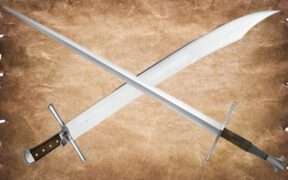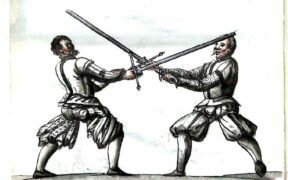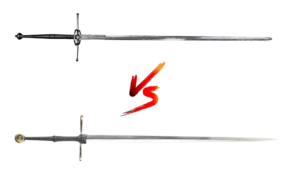One-Handed vs Two-Handed Swords: What to Use in Battle?
NO AI USED This Article has been written and edited by our team with no help of the AI
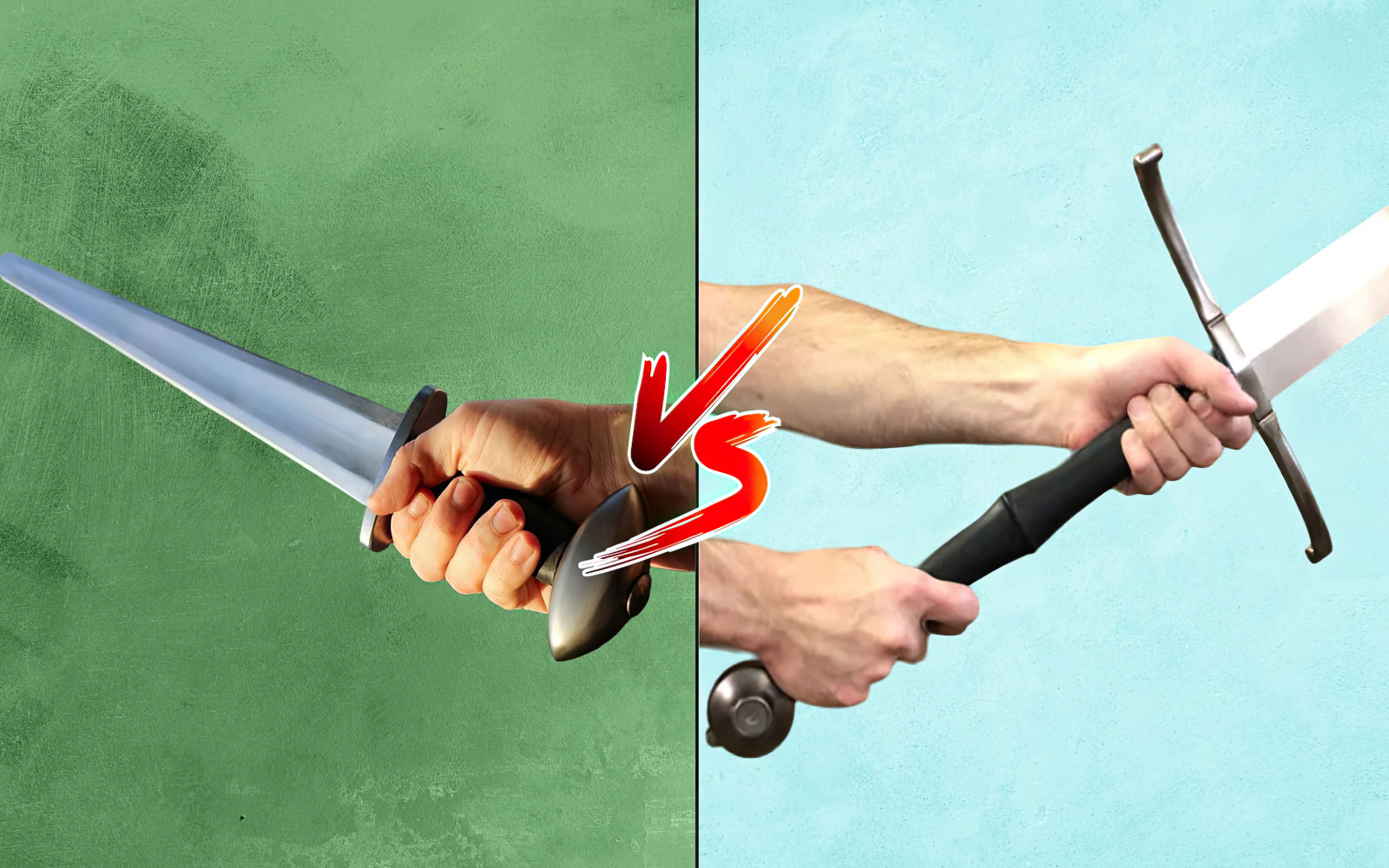
Swords from all around the world can be broadly categorized into one-handed and two-handed swords. With unique characteristics, both differ significantly in how they are used in combat.
This distinction gives rise to one of the most passionate debates in the sword community—which group is superior, and why one would be preferred over the other.
This article explores the questions above by outlining their differences and evaluating their effectiveness in various combat scenarios.
One-Handed, Two-Handed: What Does it Mean?
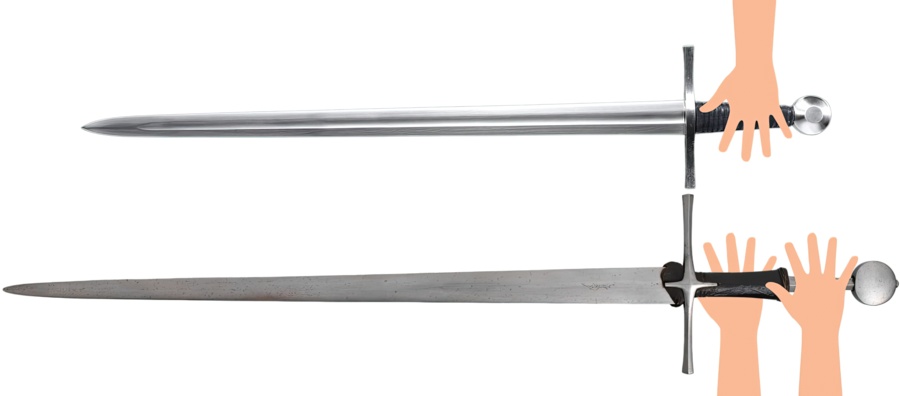
One-handed swords are designed to be wielded with one hand, while two-handed swords require the use of both. The most obvious differences between them are their length and hilt size, both variables that affect how these weapons are used in combat.
- One-Handed Swords
Shorter and lighter, these swords are easier to maneuver and can be used with a shield for added defense. Examples include the Roman gladius, European arming sword, Viking sword, and rapiers.
- Two-Handed Swords
These swords are longer and heavier, hence the need for two hands. Besides offering a reach advantage, the additional hand allows for greater control and more powerful strikes. Examples include the longsword, Scottish claymore, Japanese katana, and zweihander.
Combat Preference: Advantages and Disadvantages
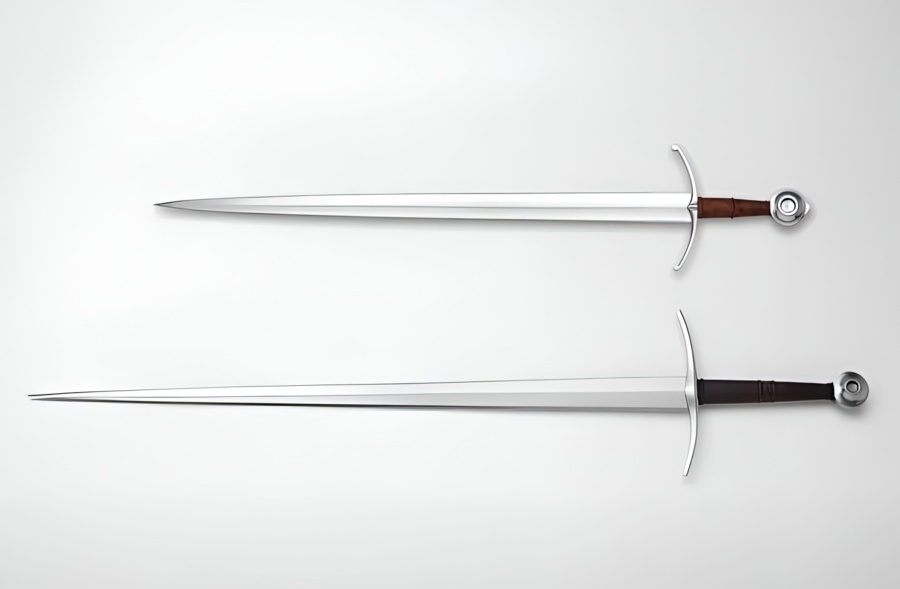
No matter the weapon, there are always pros and cons to each.
One-Handed Swords
The advantages of a one-handed sword include
- Practicality: Easier to wield, master, and carry.
- Versatility: Can be used in battlefield formations and paired with a secondary weapon or shield for added offense and defense.
- Speed: Lighter and quicker to unsheathe, it allows for fast and agile attacks.
Meanwhile, its disadvantages include its reduced efficacy against heavily armored opponents and its shorter reach compared to two-handed swords.
Two-Handed Swords
Like one-handed swords, the pros and cons of two-handed swords are due to their design. Its advantages are:
- Power: Due to its weight, it offers greater striking force and is more effective against armor.
- Reach: Having a longer reach means keeping opponents at a distance, great for open-field combat.
- Versatility: Despite its size, half-swording techniques can be used in close-quarters combat. These swords are also capable of precise cuts and thrusts.
On the other hand, its disadvantages include its bulkiness, especially in confined spaces. Due to its length, it is also slower and more challenging to draw.




Fighting Scenarios: What to Choose? (Our Opinion)
Each with their own pros and cons, the choice between one and two-handed swords comes down to user preference. However, there are certain combat scenarios where one might be more advantageous than the other.
Army Warfare – One Handed Swords
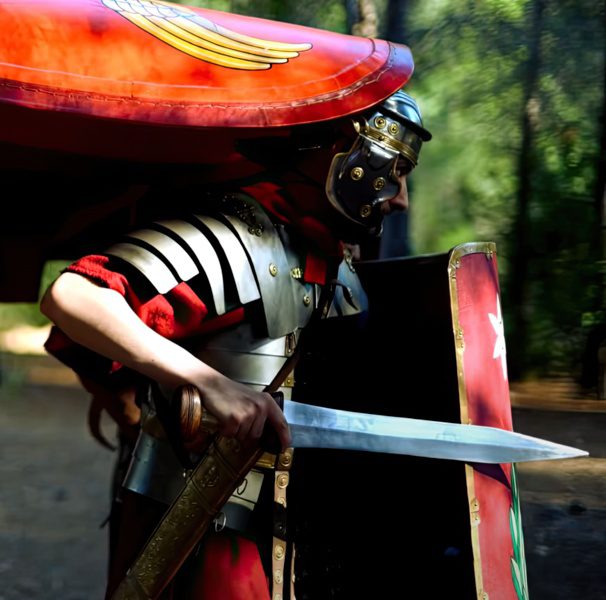
In large scale battles, one-handed swords may have the upper hand due to their practicality, versatility, can be paired with shields, and are generally much cheaper to produce. Some models, such as the Viking seax, the Chinese dao, messer, and falchion could be efficiently mass-produced and serve effectively as sidearms.
Besides excelling in tight melee situations such as in a Roman shield wall or testudo formation, one-handed swords are also easier to handle on horseback, perfect for cavalry troops in warfare.





Self Defense – Mix

For self-defense, both one and two-handed swords can be effective. However, determining which is superior would depend on the situation.
For example, one-handed swords would be preferable in confined spaces such as a medieval tavern or Japanese ryokan as the longer two-handed sword would be a hindrance. However, in open areas, two-handed swords offer significant advantages in power, reach, and even defending against multiple foes at the same time.
Dueling – Two Handed Swords

In unarmored one-on-one duels, two-handed swords are superior in terms of reach and versatility. Even in armored duels, two-handed swords are still advantageous due to their powerful strikes and the use of half-swording techniques to target weak points in armor.
Dequitem, an armored HEMA (historical European martial arts) practitioner, says, “For me, a well-balanced two-handed sword is optimal when fighting against armor. It works like a heavy two-handed dagger in half-swording.”
However, in a duel where the opponent wields a one-handed sword with a shield, the dynamics change significantly, and the odds become more evenly matched.

